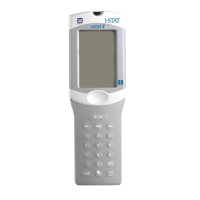Art: 714547-00F Rev. Date: 06/11/08
4
Tube
Amount of Heparin
(µL)
Final Heparin
Concentration (units/mL)
Total Heparin Units
A 0 0 0
B 10 1.0 1.0
C 20 2.0 2.0
D 30 3.0 3.0
E 40 4.0 4.0
F 50 5.0 5.0
G 60 6.0 6.0
5. Using a butterfly needle and a 10 cc syringe, obtain 9.0 cc of fresh whole blood from a normal
healthy donor who is not currently taking medications.
6. Accurately dispense 1.0 mL of the fresh whole blood sample to each of the seven (previously
prepared) plastic test tubes A to G and gently mix by inversion.
7. Immediately using plastic transfer pipet or a syringe withdraw about 0.3 mL of the unheparinized
blood from tube A and dispense into 2 ACT cartridges. Begin the test.
8. Record the ACT results.
9. Repeat steps 7-9 for blood samples “B”, “C”, “D” “E”, “F” and “G”.
Note: Before testing tubes B – G, mix gently by inversion.
10. Record the clotting times and graph the results, using “Avg. ACT seconds” on the y-axis and
“Heparin Concentration” (units/mL) on the x-axis.
Result Interpretation
Inspection of the dose-response curve will identify a linear sensitivity response. Linearity is defined
statistically by the correlation coefficient (r value) of the assay, which should be ≥ 0.88.
Note: Due to variability of heparin sensitivity, high levels may yield out of range high results. An
intermediate amount of heparin can be used to perform linearity (e.g. 35 μL). The actual values
obtained will vary among donors. The heparin type (beef or porcine), manufacturer source and
lot number of the heparin preparation will also affect results. The maximum concentration of
heparin at which donor blood will clot is dependent upon physiologic characteristics of the
donor. Extremely elevated clotting times can be excluded from the analysis.

